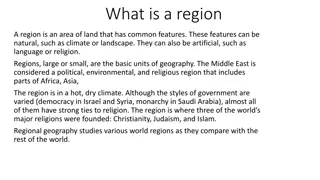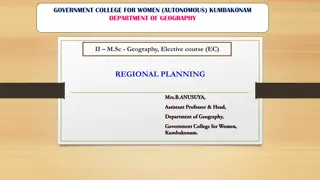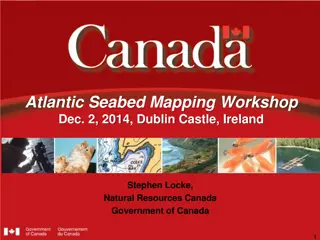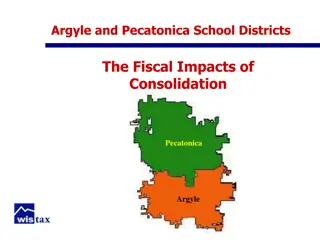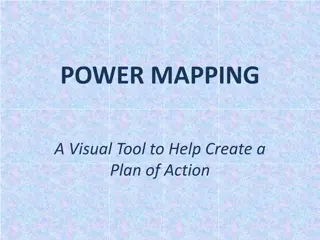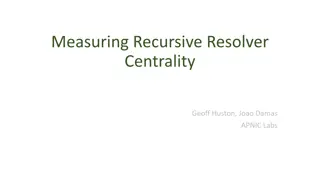
Wine Industry Consolidation Trends in New World Regions
Explore the dynamics of consolidation versus competition in the wine industry, as discussed in Rachel Ziemba's presentation at AAWE, Stellenbosch. The comparison across countries, factors affecting consolidation, and the impact on production levels and vineyard areas are highlighted. Learn about the development of wineries, dominance of largest wineries, and the preservation of unique styles in the context of industry consolidation.
Download Presentation

Please find below an Image/Link to download the presentation.
The content on the website is provided AS IS for your information and personal use only. It may not be sold, licensed, or shared on other websites without obtaining consent from the author. If you encounter any issues during the download, it is possible that the publisher has removed the file from their server.
You are allowed to download the files provided on this website for personal or commercial use, subject to the condition that they are used lawfully. All files are the property of their respective owners.
The content on the website is provided AS IS for your information and personal use only. It may not be sold, licensed, or shared on other websites without obtaining consent from the author.
E N D
Presentation Transcript
Mapping Consolidation in New World Regions Rachel Ziemba Presentation at AAWE, Stellenbosch June 2023
The Problem: Consolidation vs Competition Motivation: Competing trends increase in total number of wineries and concentration of ownership in Canada? Comparison across countries? What drives these trends? Why is wine consolidation different from other alcohol Do these decisions impact the production levels or areas under vine?
Comparing New World Regions Study compares development of number of wineries, dominance of largest wineries and winery groups and other factors including production and area under vine. Most regions continue to mark increase in number of wineries and area under vine. Exceptions are South Africa and Australia. Reflects phase of expansion Acquisitions can new net wineries as many past winery owners start new, smaller wineries or past workers branch out to start new ones. Production impact mixed and may be more explained by climatic and economic risks (climate). In some cases, uprooting for quality or environment is reducing area under vine.
Comparative Industry Perspective Winery acquisition typically preserves the name, terroir and unique style, retaining a distinct brand and style of wines that are theoretically competitors. Spirits and Beer acquisitions keep brand but typically centralize production, often scaling up production to allow local production to have a greater audience and impact market share. Some craft beer loses distinctive location and manufacturing inputs -> consolidation of production. Wine often preserves terroir focus, AOC/related regulations, consolidating in other areas Potential benefits: potential upgrades to the winemaking and winemaker either due to new capital or group assets Buying power for supplies and equipment efficiencies in administrative processes Common marketing and sales better able to negotiate with sellers/distributors especially in larger retail.
US: New Regions Drive Growth Number of wineries increasing at relatively steady rate since 2000. most new wineries outside of California (new areas), area under vine ex California increasing less rapidly Production has eased reflecting recurrent climatic risks especially in West Coast and consumption changes. Largest producers account for growing share. Most new wineries are small. Wineries and Production 12,000 1,000.00 10,000 800.00 8,000 600.00 6,000 400.00 4,000 200.00 2,000 0 0.00 2009 2010 2011 2012 2013 2014 2015 2016 2017 2018 2019 2020 2021 Number of Wineries Production volume (m gallons, right axis) US Commerce Department, author
Australia: Falling Wineries, Increasing Volumes Australia General downtrend in number of wineries since peak in 2014. mid-size wineries most affected as were more reliant on domestic market. Wine growers also falling in number. Production relatively flat, with a one-off downturn in 2020 due to fires/Covid. Larger producers and owners continue to increase market share especially in exports. Climate trends and water usage offset some increase in new regions (Tasmania). 3,000 2,500 2,000 1,500 1,000 500 0 2013 2014 2015 2016 2017 2018 2019 2020 2021 2022 Wine Production (m litres) Wineries Wines Australia, author
South Africa: Consolidation/Exits Reducing Number of Wineries Total number of wine producers declining over last decade, despite some stabilization. Expansion into new regions partly offsets broader trend. Shift to Bulk wine sales may increase incentive to consolidate. Wholesalers have been more volatile independents and cooperatives have reduced numbers. Covid-related shocks still to be felt on winery size and consolidation. South Africa Wineries and Production 580 11 570 10.5 560 550 10 540 9.5 530 520 9 510 500 8.5 2015 2016 2017 2018 2019 2020 2021 Wineries Production (m hectolitres, right axis) WOSA, author
New Zealand: Consolidation/Exits Reducing Number of Wineries New Zealand General trend of increase in area under vine (new regions) but more ambiguous number of different producers. Production has also increased but likely is lagging the increase in area under vine -> climate, time to maturity. Number of solely wine growers has eased, but total wineries have edged up relatively flat. Impact of existing producers seeking out other regions? 1,000 44,000 42,000 800 40,000 600 38,000 400 36,000 200 34,000 0 32,000 Number of Wineries Wine Growers Production (m litres) Area under cultivation (right axis) Wines New Zealand, author
Canada: Consolidation/Exits Reducing Number of Wineries Canada Production and Wineries General upward trend of both production and wineries. Inflation and currency dynamics likely overstates production increase. Significant consolidation of ownership even as total number of wineries increase. Purchasers include larger wineries (expansion to new areas), PE firms in US or Canada, pension funds. Partly reflects new regions including new areas within existing wine regions (new sub regions). 2,500.00 520 510 2,000.00 500 490 1,500.00 480 470 1,000.00 460 450 500.00 440 430 0.00 420 2015 2016 2017 2018 2019 2020 2021 Winery Production (C$) Number of Wineries (right Axis) Statistics Canada, author
Argentina: General Downward Trend 228 18 Volatility of both production and volume reflecting climate and economic stress. Currency and debt volatility have impacted propensity to export in given years. Hard to see explanation from number of producers. Some shift to new areas to take advantage of infrastructure/exports. 226 16 224 14 222 12 220 10 218 8 216 6 214 4 212 2 210 208 0 2010 2011 2012 2013 2014 2015 2016 2017 2018 2019 2020 Wine Growing Areas (1000 hectares) Volume of Wine (m hl, right axis) Instituto Nacional de Vitivinicultura, author
Future Questions Will new owners of wineries be content with the high cost of running separate wineries especially in areas where production can not scale up due to land? How real are the economies of scale from sales/marketing/back-end consolidation? Does differentiated labels/wineries help more in areas where sales mostly direct to consumer/restaurants vs volume? How will increasing transport and production costs impact these trends? Accelerate closing of wineries Impact of business and life cycle of wineries started/expanded in the last half century



